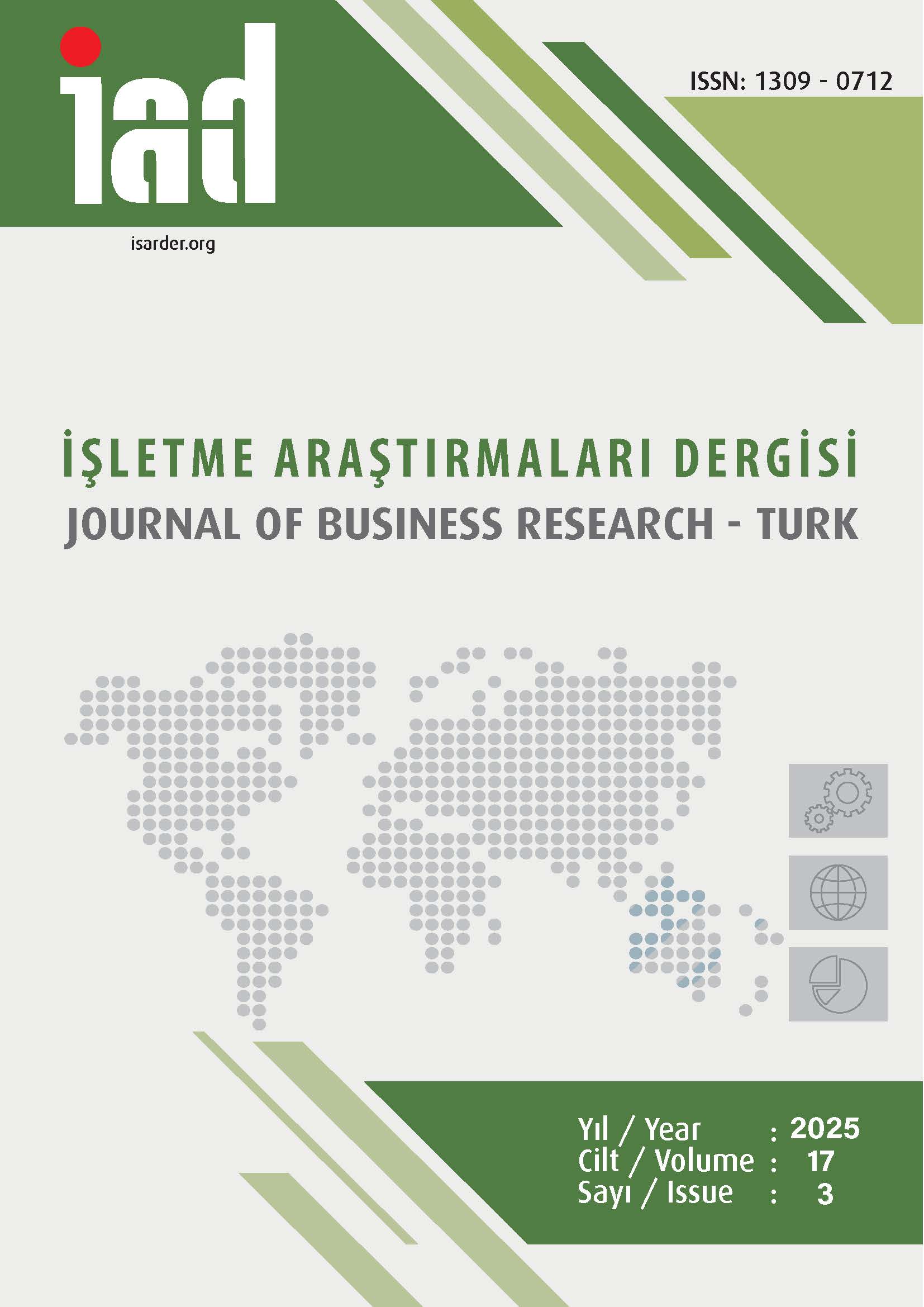Evaluation of the Financial Performance of Bank with the LOPCOW-RAM Method: The Case of Borsa Istanbul
DOI:
https://doi.org/10.20491/isarder.2025.2073Keywords:
Multi-Criteria Decision Making, Financial Performance, Turkish Banks, LOPCOW-RAMAbstract
Purpose – The financial performance of banks operating in Turkiye and listed on Borsa Istanbul is analyzed using a multi-criteria evaluation method. It is aimed to analyze the financial performance of banks with an innovative approach by considering factors such as their complex structures, cash flows and capital adequacy ratios. In the analysis process, it is aimed to identify the most successful banks based on the financial data between 2018 and 2023 and to reveal the main criteria affecting this success.
Design/methodology/approach – RAM, a multi-criteria decision-making method, is used in the study. This method allows for the multidimensional consideration of various criteria to determine the financial performance of banks. In the performance evaluation process, LOPCOW method was preferred to determine the criteria weights.
Results – As a result of the analyses, it is observed that there is a significant improvement in the performance of banks that have increased their profitability. The most effective criterion in the analysis is the return on equity. In addition, it has been determined that the banks with the best performance in the banking sector are the banks engaged in development banking activities. In this context, KLNMA, TSKB, QNB Finansbank and Şekerbank stand out as the top four banks in terms of performance.
Discussion – The results show that profitability-oriented strategies have a decisive impact on financial performance in the banking sector. Return on equity has emerged as a critical factor for banks' long-term sustainability and competitiveness. In particular, the success of development banks in the sector reveals that their contribution to the economy and capital management skills are more effective than other banks. The findings of the study provide important information to decision makers in the banking sector on strategic planning and resource management and suggest that more comprehensive analyses can be conducted on the effects of banking activities on financial performance.
Downloads
Published
How to Cite
Issue
Section
License

This work is licensed under a Creative Commons Attribution-NoDerivatives 4.0 International License.





